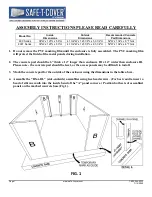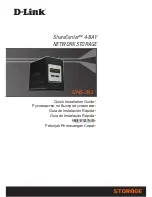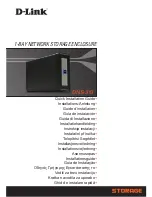
Glossary
179
video adapter
— The logical circuitry that provides (in combination with the monitor)
your system’s video capabilities. A video adapter may be integrated into the system
board or may be an expansion card that plugs into an expansion slot.
video driver
— A program that allows graphics-mode application programs and
operating systems to display at a chosen resolution with the desired number of colors.
Video drivers may need to match the video adapter installed in the system.
video memory
— Most VGA and SVGA video adapters include memory chips in
addition to your system’s RAM. The amount of video memory installed primarily
influences the number of colors that a program can display (with the appropriate video
drivers and monitor capabilities).
video resolution
— Video resolution (800 x 600, for example) is expressed as the
number of pixels across by the number of pixels up and down. To display a program at
a specific graphics resolution, you must install the appropriate video drivers and your
monitor must support the resolution.
W
— Watt(s).
WH
— Watt-hour(s).
win.ini file
— A start-up file for the Windows operating system. When you start
Windows, it consults the
win.ini
file to determine a variety of options for the
Windows operating environment. The
win.ini
file also usually includes sections that
contain optional settings for Windows application programs that are installed on the
hard drive.
Windows 2000
— An integrated and complete Microsoft Windows operating system
that does not require MS-DOS and that provides advanced operating system
performance, improved ease of use, enhanced workgroup functionality, and simplified
file management and browsing.
Windows Powered
— A Windows operating system designed for use on NAS systems.
For NAS systems, the Windows Powered operating system is dedicated to file service
for network clients.
Windows Server 2003
— A set of Microsoft software technologies that enable software
integration through the use of XML Web services. XML Web services are small
reusable applications written in XML that allow data to be communicated between
otherwise unconnected sources.
XML
— Extensible Markup Language. XML is a way to create common information
formats and to share both the format and the data on the World Wide Web, intranets,
and elsewhere.
ZIF
— Zero insertion force.
Book.book Page 179 Monday, September 14, 2009 12:57 PM
Summary of Contents for PowerVault DL2000
Page 1: ...Dell PowerVault DL2000 Hardware Owner s Manual ...
Page 10: ...10 Contents Glossary 169 Index 181 ...
Page 62: ...62 Using the System Setup Program ...
Page 128: ...128 Installing System Components ...
Page 166: ...166 Jumpers and Connectors ...
Page 168: ...168 Getting Help ...
Page 180: ...180 Glossary ...
Page 188: ...188 Index ...










































